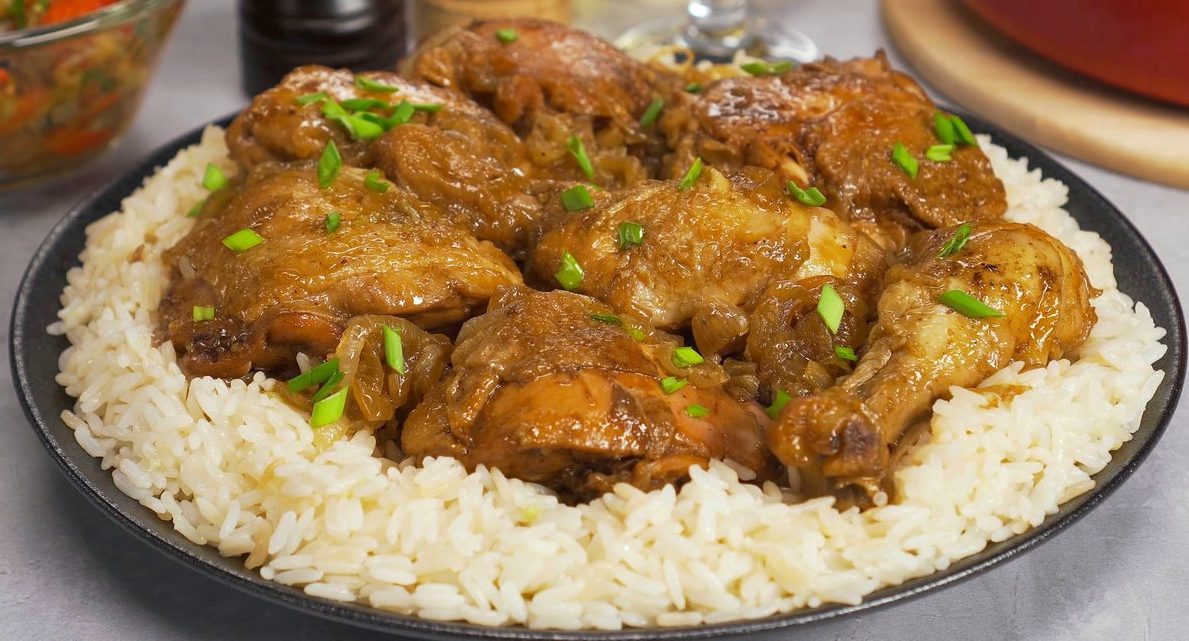Adobo: Filipino History on a Plate

|
Getting your Trinity Audio player ready... |
Asian cuisine has a worldwide reputation for exquisite, mouth-watering delicacies. Whether it’s Pad Thai from Thailand or dim sum from China, certain dishes become deeply embedded in a nation’s culture and global brand. The international representation of Filipinos has often been limited by a lack of knowledge about Filipino food and its place in the nation’s history. Despite an American Vogue article written in 2017 touting Filipino food as the next big thing, the breakthrough has yet to happen. To many in the West, it remains a mystery.
One reason for this is that Filipino cuisine can be challenging. A famous delicacy, ‘balut,’ is prepared using duck embryos, a dubious ingredient in the context of Western tastes. However, we shouldn’t characterize a country’s cuisine. Adobo is close to every Filipino’s heart and enjoys uncontested status as the national dish. How this simple stew became a beloved part of Filipino culture is a story that took centuries to unfold.

Four centuries of colonization
The Philippines is an archipelagic country of over 7000 islands in the Western Pacific, giving the nation a unique geographic footprint. About 2,000 of these islands are inhabited. Many have their distinct take on culture and food; that’s 2,000 different points of view to consider. However, the most significant influence on Filipino food (and culture) comes from the jaws of colonialism. The Philippines endured almost 333 years of colonization by the Spanish. There were also a couple of years as a British colony and 48 years of American rule, followed by three years of Japanese occupation.
Unsurprisingly, Filipino cuisine gradually absorbed the culinary influences of the colonizers. Today, you can find Spanish, Japanese, American, and Indian elements in Filipino cuisine. Accordingly, the national dish of the Philippines, Adobo, was inspired by Spanish cuisine.
Pre-colonial cooking in the Philippines was basic and focused primarily on boiling, steaming, and roasting. The people used local ingredients such as poultry and cattle alongside foraged plants and crops they grew. With the arrival of migrants from southern China in 3200 BCE, people in the Philippines learned about rice cultivation and other farming practices. Over time, agricultural trade and colonization’s impact turned into trends that shaped Filipino cuisine. Vinegar was introduced to the country by Malay sailors, and soy sauce by the Chinese. This duo of vinegar and soy became the go-to marinade for preserving food in the tropical climate. When the Spanish invaded in the 16th century, they noticed Filipinos using this marinade and recognized a similarity to a marinade of their own called adobe—coining the term Adobo.
Spanish Filipino Fusion Cuisine
The Spanish colonized the Philippines for over 300 years. That’s a long time for anyone to be away from their homeland. One way to combat homesickness is with familiar food, which the Spanish did. They introduced Spanish and Mexican influences into the local cuisine. Over time, these changes influenced the eating habits of both well-to-do and working-class Filipinos. The Spanish also introduced many delicacies by importing ingredients that were not available locally.
Filipino food is often called the first fusion cuisine. Filipinos started cooking with Spanish ingredients such as tomatoes, garlic, and onions fried in oil. They adopted different culinary techniques and recipes from their Spanish colonizers. Since Mexico was another Spanish colony, links between Mexico and the Philippines developed throughout the 16th century.
Even though the sailing voyage between Manila and Acapulco took at least four months each way, the route became an essential conduit for Pacific trade. Silver from mines in Mexico was traded for silks, jade, and gunpowder from China, all via Manila. This trade between Mexico and the Philippines led to the availability of new and exotic ingredients such as bell peppers, chili peppers, tomatoes, cacao, avocado, peanuts, pineapples, and corn. Given a wealth of different elements, Filipinos embraced their novel flavors, like sauteed onions and garlic, which changed the taste of Filipino cooking.
Filipinos live to eat, especially when it comes to Adobo.
Sometimes, it feels as if Filipinos live to eat. It’s hard to emphasize how much food plays a role in Filipino culture. It’s one of the core elements of relationship building, especially when celebrating cultural practices and traditions. Hospitality is so deep in the national psyche that it’s not uncommon for people to invite strangers to their homes on feast days and insist they take food home afterward.
The essential characteristics of Filipino food are the simplicity of cooking procedures and the blend of flavors. It’s important to remember that Adobo is a cooking process rather than a dish. Traditionally, people cooked the stew in clay pots. Today, it’s more likely to be made in steel cookware; some versions even use a wok.
Love of the dish has spread, and versions are enjoyed in different countries. There’s Mexican Adobo, Spanish Adobo, and Puerto Rican Adobo. But nothing beats Filipino Adobo’s popularity as the best-loved dish in Filipino culture. The common perception of Adobo gives the impression that it’s a dish of pork and chicken braised in a hot stew. However, you can use almost any ingredients to prepare Adobo, including eggplant, mushrooms, or squid. It’s a dish that lends itself to the cook’s creativity.
The dish uses vinegar, garlic, black peppercorns, bay leaves, and soy sauce. That much is generally agreed upon. Everything else is open to interpretation. The proportion of the ingredients used in Adobo differs according to each family’s preferences and the availability of foodstuffs. Some people love chicken Adobo, while others prefer a mix of pork and chicken. Similarly, some love a savory and saucy flavor, while others prefer a hint of sourness.
The flavors of Adobo differ significantly across the many islands in the Philippines archipelago. For example, Filipinos in the south use coconut milk. In the north, they add ginger. In other places, they don’t use soy sauce; chefs will use fish sauce and annatto to make red Adobo or turmeric to make yellow Adobo. Filipino cuisine also includes white Adobo, made by skipping any sauce. Over the centuries, what is essentially a dish of stew has morphed into countless variations, with recipes passed lovingly through generations, each version reflecting a time and place.
How Spanish is Adobo?
Some food historians claim that the ingredients for making Adobo were already present in the Philippines before the Spanish arrival in the 16th century. The Spanish undoubtedly noticed similarities between the Filipino dish and their recipe for marinade. The Adobo we know today is a mash-up of influences with a distinctly Filipino flavor.
Adobo’s ascension to the Philippines’ national dish is a roadmap to the country’s history. Its status illustrates how Filipinos adapted throughout the colonial period yet still preserved their national identity by assimilating aspects of other cultures. There’s an old Filipino proverb, “A person who does not remember where he came from will never reach his destination.” Adobo is a culinary aide memoir. It symbolizes Filipino roots and resilience—and, of course, it tastes great.
Is Adobo really that good? You’ll have to trust me on this, but yes, it is!
Edited by Michael Moss












